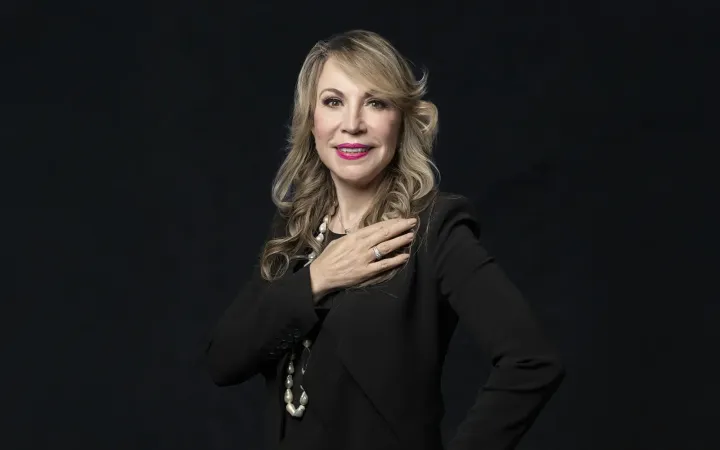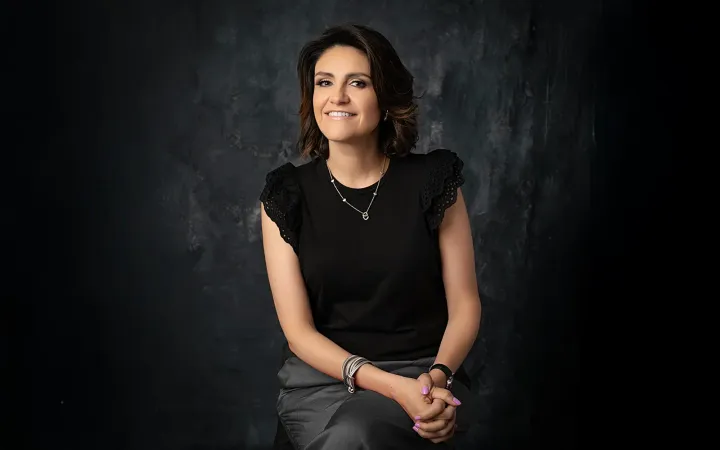
Por Claudia Pérez Atamoros

¿Mujeres extraordinarias? ¡Ah, qué caray!
Todas las mujeres “ordinarias” hacen cosas extraordinarias; como sobrevivir, por ejemplo, en un país como el nuestro. ¿Quién me desmiente?
Una mujer “ordinaria” -la común y corriente- todos los días de su vida se ve “condenada” a ser excepcional, desde que nace mujer. No puede comportarse de otra manera porque si no, abusan de ella en las chambas, en las relaciones, en el transporte. La vida cotidiana de las mujeres extraordinarias no es nada fácil ni en México ni en el mundo.
En nuestro país, según cifras del INEGI (2021) a nivel nacional, del total de mujeres de 15 años y más, 70.1 % han experimentado al menos un incidente de violencia, que puede ser psicológica, económica, patrimonial, física, sexual o discriminación; mientras que la Oficina de las Naciones Unidas contra la Droga y el Delito en México reportó en noviembre pasado que:
A nivel global, 736 millones de mujeres (1 de cada 3) han sido sometidas a violencia física y/o sexual al menos una vez en su vida; que, en promedio, cinco mujeres o niñas son asesinadas cada hora por alguien de su propia familia; y que el costo anual de la violencia contra las mujeres y las niñas a nivel mundial es alrededor de $1.5 billones de dólares.
La violencia, el menosprecio y demérito hacia la figura femenina es una epidemia global que nos atañe a todos, a todas y a todes.
La señora Yolanda tiene 48 años. Parece de 65. En su mejilla izquierda tiene “un tatuaje” -dice ella- que le recuerda que “ese día no hice las cosas bien”. Es una cicatriz que no deja duda de que le estamparon la plancha caliente en su cachete, entonces de niña. Fue su padre. Un dobladillo “mal planchado” fue la excusa. El detonante es la falta de educación o la educación machista. El resultado a parte de la marca externa, física, el daño emocional. “Preferí quedarme solterona”. –¿Le hice bien la costura?
En México, en promedio, 10 mujeres son asesinadas al día y 7 de cada 10 han experimentado al menos una situación de violencia a lo largo de su vida.
Malena, hoy de 60, perdió a sus hijos hace casi 18 años. Perdió es un eufemismo. Su entonces pareja decidió cambiar las cerraduras de la casa y no volver a dejarla entrar. Su odio hacia la figura materna emergió con furia. La denunció por abandono de hogar y demandó la pérdida de la patria potestad. Ganó él. Él, el periodista de las entonces grandes influencias y medios. Ella, mujer ordinaria, trabajadora en su hogar, asistente personal del mequetrefe, lo perdió todo, todo, de la noche a la mañana: su casa, su entorno y lo más importante, a sus hijos, pero como mujer extraordinaria encontró la manera de rehacerse y de hacerse presente en la vida de ellos, cada día durante estos últimos 18 años. Pese a ser alienados por el progenitor (como lo demostraron las periciales) la presencia de ella -a la distancia- impidió la ruptura de la figura materna y hoy, que ya son mayores de edad, ambos, regresaron a su regazo y agradecen que nunca se haya apartado de ellos, aunque siguen viviendo con ese hombre manipulador que los ha convertido en jóvenes dependientes absolutos de sus gustos y decisiones.
El Código Civil de la CDMX, al igual que el de otros estados de la República, señala en su artículo 282 que la custodia de un menor debe ser favorable a la madre. “Los menores de 12 años deberán quedar al cuidado de la madre, excepto en los casos de violencia familiar cuando ella sea la generadora o exista un peligro grave para el desarrollo normal de los hijos”. A veces la ley, es letra muerta.
Ella, Riux, mi amiga de infancia, reencontrada en la adultez, está por cumplir 62 años. Lleva seis años asolada por el maldito cáncer. Su mastografía de rutina reportó un minúsculo tumor, más pequeño que una lenteja. Detectado a tiempo, aunque advierten que es de un tipo de los más agresivos. Tres años de quimioterapia y radiaciones lo convierten en indetectable. Mujer extraordinaria. Mujer ordinaria, madre de dos. Esposa. Hija ejemplar. Amiga espectacular que sabe escuchar. Que ríe y baila como una diosa. Es feliz.
De pronto, molestias en la vista, exámenes y de nuevo, el diagnóstico que nadie espera ni quiere escuchar y menos por segunda vez. Es metástasis (lo sabrá después) ¿pero acaso el mamario no desapareció? Le dicen en Nutrición que esta vez es otro. Más estudios de gabinete. Una pequeña mancha en el pulmón ahí habita el tumor primario. La someten a radiaciones consecutivas en el cerebro para acabar con la metástasis y lograr que recupere la totalidad de su campo visual. Lo desaparecen. Continúa adelante con la misma Fé que la ha caracterizado siempre. Se guarda por un par de días tras las quimios y las radios pero siempre vuelve a estar, a convivir, a hacer ejercicio, a disfrutar la comida, a saborear su vino tinto, a cantar a todo pulmón. Mujer extraordinaria.
Le comunican que el tumor pulmonar no es operable. La someten a tratamientos de última generación en Cancerología. Es candidata tras miles de pruebas al más innovador tratamiento contra el cáncer de pulmón: la inmunoterapia. Y ella, la mujer ordinariamente extraordinaria, saca 10. El maldito cáncer (bien hizo el dios Sabines en calificarlo así) se convierte en operable. Y se lo extirparon. En menos de una semana está fuera del hospital, caminando, haciendo los ejercicios y poniéndole cara, muy buena cara a la vida.
Y en los estudios de rutina le encuentran “algo” en el mediastino. Y ahí está ella, pa´lante. 30 radioterapias, una diaria, y sus quimios de ley. Además de la inmunoterapia dirigida. Y uno la ve y la ve sensacional. Es actitud. Es paz. Es un ejemplo. Se cae, sí. Se pregunta ¿por qué a mí?, también. Es ordinaria sencillamente porque es una mujer extraordinaria. Me niego a llamarla guerrera.
En México, a la medicina también le hace falta la perspectiva de género. Los datos son reveladores. Las fechas también. No fue sino hasta 1993 que se realizó la inclusión de las mujeres en los estudios clínicos en Estados Unidos. “Así como existe la brecha salarial entre hombres y mujeres, también existe y ha comenzado a ser tema de discusión la gigantesca brecha de datos e información científica asociada a la salud de las mujeres”.
Las mujeres sufren sobre medicación dada la escasa presencia en los ensayos clínicos para probar nuevas drogas. Los datos muestran que a pesar de que los participantes reciben la misma dosis de una droga independientemente del sexo, en más del 90% de los casos, las mujeres tienen peores efectos adversos.
En 2011 una revisión en los ensayos clínicos encontró que el 75% no reportó ningún resultado por sexo, incluyendo nueve estudios donde menos del 20% de los participantes eran mujeres; la brecha de género en las dosis de drogas ha persistido en todo el mundo. Tanto así, que un estudio transversal de más de 43 mil artículos publicados y más de 13 mil ensayos clínicos, encontró que las participantes femeninas estaban sustancialmente subrepresentadas.
En una medición realizada el 2018, más de dos décadas después de que las mujeres volvieran a ser incluidas en los ensayos clínicos, se encontró que, en 107 de estos, un 74% de ellos no se molestó en incluir el sexo como un factor a considerar cuando se informaban sus resultados.
Y ya mejor ni hablamos de las mujeres trans ¿o sí?
El artículo 2 de la Declaración Universal de los Derechos Humanos dice que toda persona tiene todos los derechos y libertades proclamados en la Declaración, sin distinción alguna de raza, color, sexo, idioma, religión, opinión política o de cualquier otra índole, origen nacional o social, posición económica, nacimiento o cualquier otra condición.
Plena libertad sin discriminación.
Son mujeres, mujeres extraordinarias, en un mundo que subvalora, violenta y discrimina a las féminas. Si fuera un chiste me atrevería a preguntar y exclamar ¡¿a quién se le ocurre?!
El pasado 29 de febrero, La Suprema Corte de Justicia de la Nación (SCJN) determinó que las mujeres trans asesinadas deben ser consideradas víctimas de feminicidio.
El Centro de Apoyo a las Identidades Trans (CAIT) ha contabilizado 590 asesinatos de personas transgénero en todo México entre 2007 y 2022, lo que genera un promedio de 53 asesinatos al año.
Ser mujer es sinónimo de un ser extraordinario. De hazaña diaria. De supervivencia en un mundo conceptualizado por hombres y habitado por un 49,7% de mujeres de las cuales un tercio acepta haber sido víctima de violencia física o sexual y en el que, por cierto, las mujeres tienen un 73% de probabilidades de sufrir heridas en un accidente de tránsito, comparado con lo que ocurre con los hombres porque los cinturones de seguridad fueron diseñados para la fisiología masculina.
Ahí nomás. Todas, mujeres ordinarias haciendo cosas extraordinarias.
Las opiniones expresadas son responsabilidad de sus autoras y son absolutamente independientes a la postura y línea editorial de Opinión 51.





Comments ()